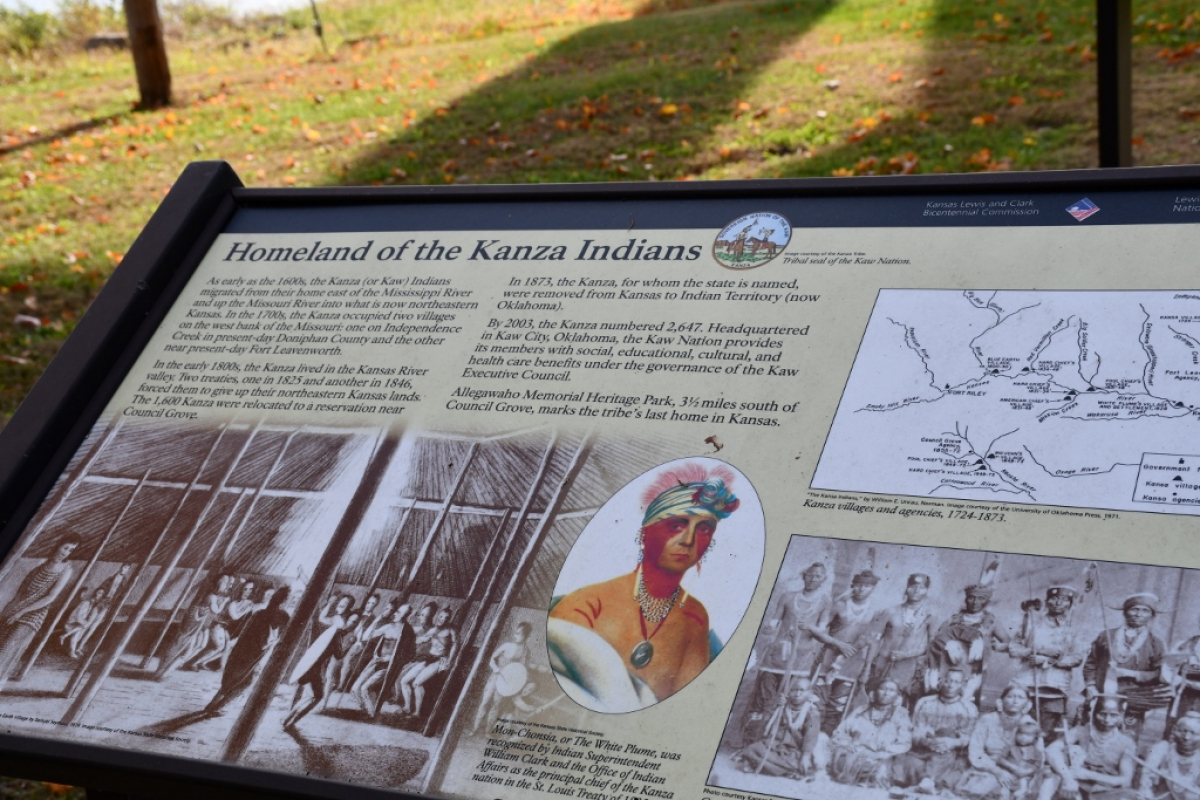Kaw Indians: Native American history in Leavenworth

A marker adjacent to the Missouri River at Leavenworth reads:
Homeland of the Kanza Indians:
As early as the 1600s, the Kanza or Kaw Indian tribe migrated from their home east of the Mississippi River and up the Missouri River to what is now northeastern Kansas. In the 1700s, the Kanza occupied two villages on the west bank of the Missouri: one on Independence Creek in present-day Doniphan County and the other near present - day Fort Leavenworth.
In the early 1800s, Kanza lived in the Kansas River valley. Two treaties, one in 1825 and another in 1846, forced them to give up their northeastern Kansas lands. The 1,600 Kanza were relocated to a reservation near Council Grove.
In 1873, the Kanza, for whom the state is named, were removed from Kansas to Indian Territory, now Oklahoma.
By 2003, the Kanza numbered 2,647. Headquartered in Kaw City, Oklahoma, the Kaw Nation provides its members with social, educational, cultural and health care benefits under the governance of the Kaw Executive Council.
Allegawaho Memorial Heritage Park, 3.5 miles south of Council Grove, marks the tribe's last home in Kansas.
This marker contains images and drawings of tribal culture and can be found at Riverfront Park and Campground in Leavenworth, 1201 Riverfront Park Road.
